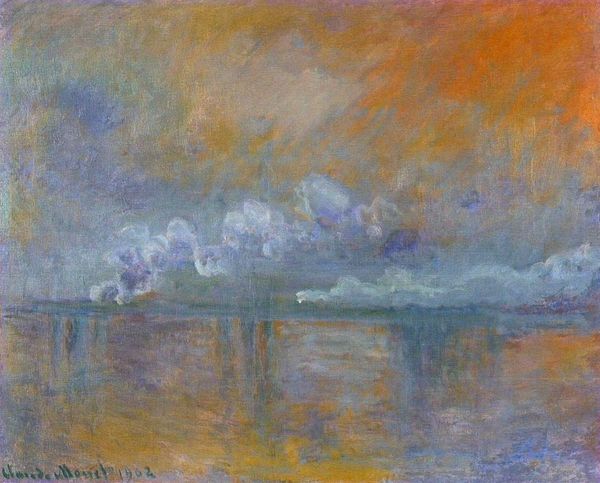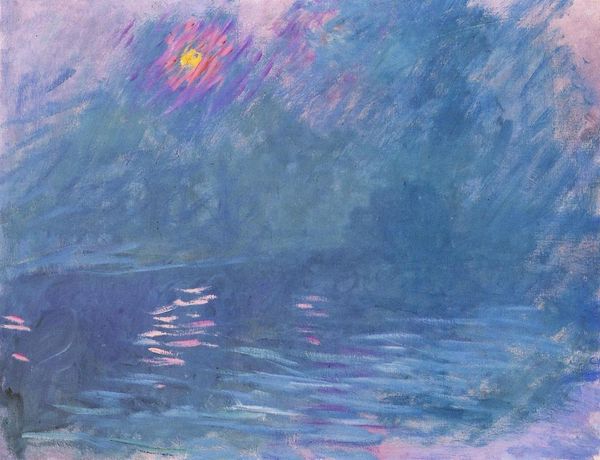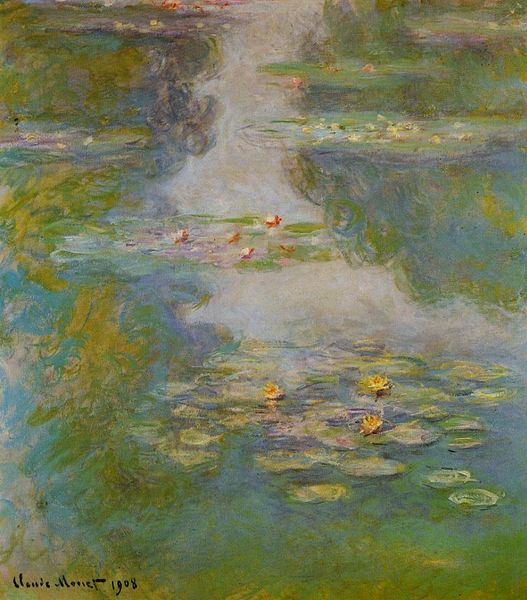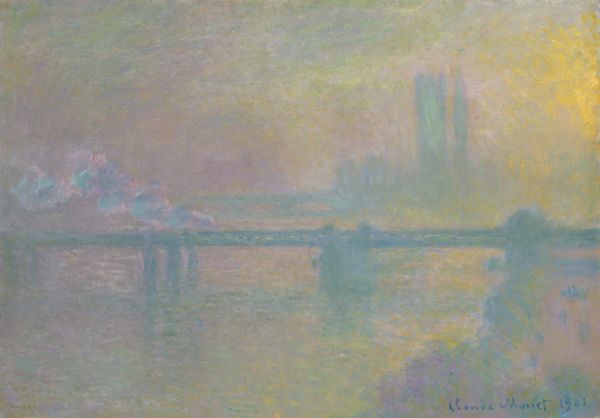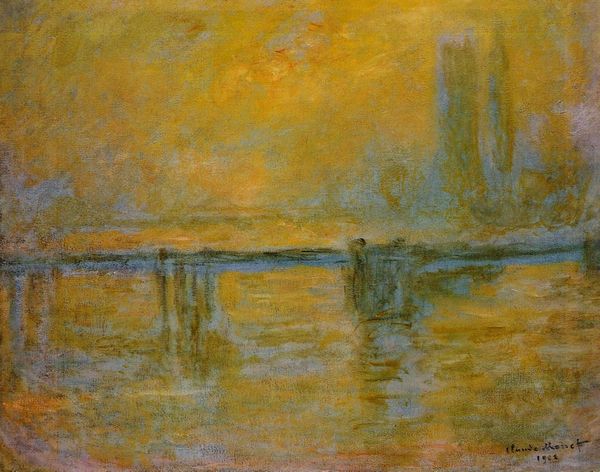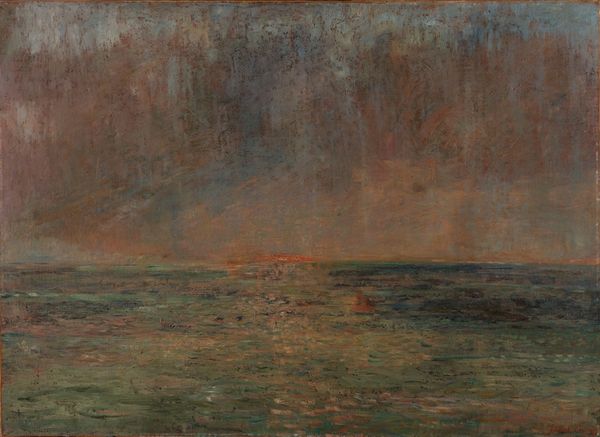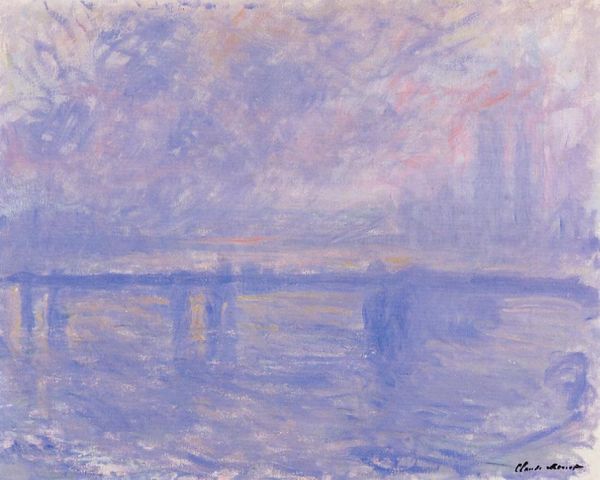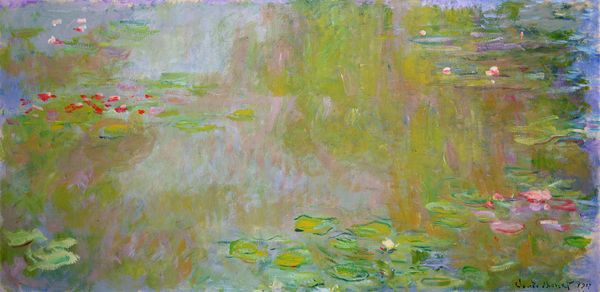
Copyright: Public Domain: Artvee
Editor: So this is Claude Monet's "Charing-Cross Bridge in London," painted around 1902, using oil. It feels incredibly dreamlike, almost fading away. How do you interpret this work? Curator: This work whispers of memory. Look at how Monet uses the motif of the bridge, not as a solid, defined structure, but as a permeable veil. What is a bridge for? To connect. Yet here, it seems to suggest a separation, a gap between perception and reality, or between London then, and our recollection of it now. Note also the almost monochrome palette; the colors suggest a persistent haze, a polluted atmosphere perhaps, or more than that, a blurring of our very recollection of place. What endures? Editor: So, it's not just about a physical place, but more about the idea of a place, how we remember it, even misremember it? Curator: Exactly. Consider the symbolism of the water, acting as both mirror and obscuring agent. It reflects, but also distorts. The "fluid brush strokes" speak not of sharp edges, but of transience. Monet isn’t just painting what he sees, but the fleeting experience of seeing. What are we left with once our experience ends? Editor: That makes me think about how London itself has changed so much since Monet painted this. So, this image serves almost as a collective fading memory? Curator: Precisely. It becomes an enduring symbol of modernity's ephemeral nature; capturing how quickly time, memory, and even cities shift, yet imprints are there nonetheless. It seems so, yes? Editor: I never thought about it that way. I’ll definitely carry that insight with me. Curator: Wonderful! I’m so glad. The emotional weight images possess extends far beyond their surface.
Comments
No comments
Be the first to comment and join the conversation on the ultimate creative platform.

